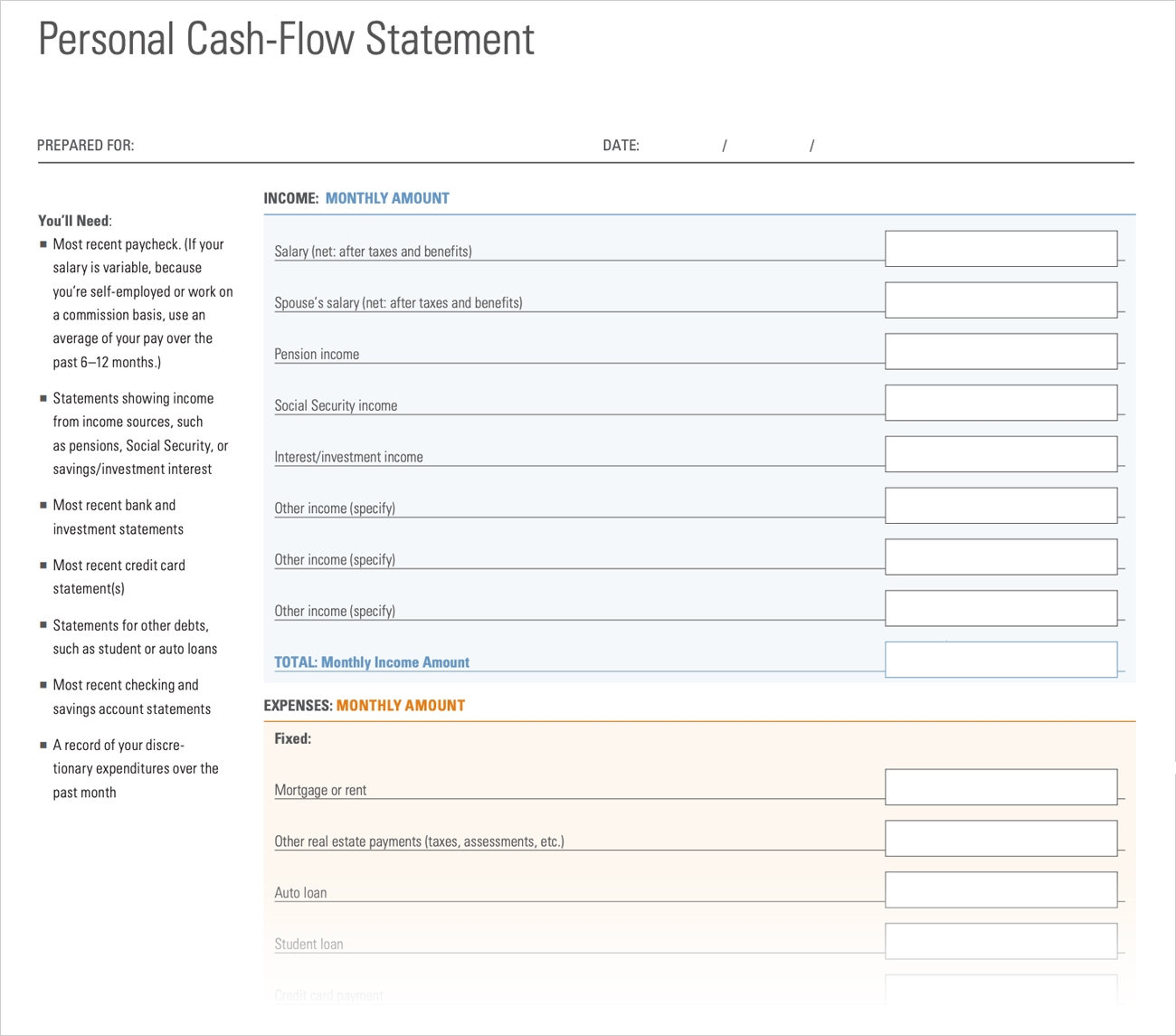

Finance
What Is Cash Flow From Investing Activities
Published: December 20, 2023
Discover the importance of cash flow from investing activities in finance. Learn how investments impact your financial health and make informed decisions for long-term success.
(Many of the links in this article redirect to a specific reviewed product. Your purchase of these products through affiliate links helps to generate commission for LiveWell, at no extra cost. Learn more)
Table of Contents
- Introduction
- Definition of Cash Flow from Investing Activities
- Importance of Cash Flow from Investing Activities
- Components of Cash Flow from Investing Activities
- Examples of Cash Flow from Investing Activities
- Analysis of Cash Flow from Investing Activities
- Significance of Cash Flow from Investing Activities in Financial Analysis
- Conclusion
Introduction
Welcome to the world of finance, where money flows like a river and investment decisions can mean the difference between success and failure. When it comes to assessing a company’s financial health, one key metric to consider is the cash flow from investing activities. But what exactly does this term mean?
Cash flow from investing activities is a crucial component of a company’s statement of cash flows, which provides insights into how a business generates and uses its cash. This specific section of the statement focuses on the cash inflows and outflows related to the company’s investments in long-term assets and other ventures.
Understanding the cash flow from investing activities is vital because it reveals the extent to which a company is investing in its future growth and generating returns from its investments. It enables investors, creditors, and other stakeholders to assess the company’s ability to deploy its resources wisely and generate additional cash flow for future operations.
In this article, we will delve deeper into the concept of cash flow from investing activities, explore its components, examine its significance in financial analysis, and provide real-world examples to illustrate its practical application.
Whether you are an investor looking to evaluate a potential investment opportunity or a business owner seeking to understand the performance of your own company, gaining a solid grasp of cash flow from investing activities is essential. So, let’s dive in and unlock the secrets behind this critical financial metric.
Definition of Cash Flow from Investing Activities
Cash flow from investing activities refers to the movement of cash resulting from a company’s investments in long-term assets and ventures. It is a crucial aspect of a company’s statement of cash flows, which provides a comprehensive overview of how a company generates and uses its cash.
Investing activities primarily involve the acquisition, disposal, and management of long-term assets such as property, plant, and equipment (PP&E) and investments in other companies. These activities play a significant role in a company’s growth and future profitability.
The cash flow from investing activities is categorized into two main types: cash inflows and cash outflows.
Cash inflow from investing activities typically includes:
- Proceeds from the sale of long-term assets or investments
- Dividends received from equity investments
- Interest earned on loans made to other entities
On the other hand, cash outflow from investing activities includes:
- Purchases of long-term assets, such as equipment or property
- Acquisition of other companies or investments in their equity
- Loans provided to other entities
It’s important to note that the cash flow from investing activities does not include cash transactions related to the day-to-day operations of a company or financing activities like borrowing or repayment of loans. These activities are recorded separately in the statement of cash flows.
By analyzing the cash flow from investing activities, investors and analysts can gain insights into a company’s capital allocation decisions. A positive cash flow from investing activities indicates that the company is generating cash from its investments, selling assets, or receiving dividends, which can be a positive sign for investors. Conversely, a negative cash flow from investing activities may indicate that the company is investing heavily in its long-term assets or making acquisitions.
Understanding the definition of cash flow from investing activities is crucial for assessing a company’s financial health and its ability to generate future profits through strategic investments.
Importance of Cash Flow from Investing Activities
The cash flow from investing activities is a crucial metric that provides valuable insights into a company’s investment decisions and financial health. Understanding its importance is vital for investors, creditors, and other stakeholders who want to assess the long-term sustainability and profitability of a business.
Here are some key reasons why cash flow from investing activities is important:
- Evaluating capital allocation decisions: The cash flow from investing activities helps investors and analysts assess how effectively a company is allocating its capital. By analyzing the cash flows related to acquisitions, purchases of long-term assets, and investments, stakeholders can gauge management’s ability to make sound investment decisions that generate future returns.
- Assessing growth prospects: Positive cash flow from investing activities signals that a company is investing in its future growth and expansion. It indicates that the company is acquiring productive assets or making strategic investments that can generate future cash flows. On the other hand, negative cash flow may indicate heavy investments, which could impact short-term profitability but potentially lead to long-term growth.
- Identifying risks and opportunities: Analyzing the cash flow from investing activities can help identify potential risks and opportunities for a company. For example, if a company is consistently investing heavily in new equipment or technology, it may indicate a commitment to staying competitive and improving efficiency. However, it may also raise concerns about high capital expenditures or potential obsolescence of assets.
- Evaluating investment returns: Cash flow from investing activities includes cash inflows from the sale of long-term assets or investments. By comparing these cash inflows to the initial investment, investors can assess the returns generated by these investments. It provides an indication of how successful previous investment decisions have been and allows for better evaluation of the company’s overall performance.
- Understanding cash requirements: Monitoring the cash outflow from investing activities is essential in understanding a company’s cash requirements. Acquisitions or investments in long-term assets often require significant cash outflows. By analyzing this aspect of cash flow, stakeholders can assess a company’s liquidity position, its ability to fund investments, and its dependency on external financing.
The importance of cash flow from investing activities extends beyond just financial analysis. It also helps stakeholders gain insights into a company’s strategic initiatives, growth potential, and risk management. By understanding this key metric, investors can make more informed decisions and businesses can better evaluate and plan their long-term investment strategies.
Components of Cash Flow from Investing Activities
The cash flow from investing activities is composed of various components that reflect the cash inflows and outflows resulting from a company’s investment-related activities. Understanding these components is essential for evaluating how a company deploys its resources and generates returns from its investments.
Here are the main components of cash flow from investing activities:
- Purchases of long-term assets: This component includes cash outflows related to the acquisition of long-term assets such as property, plant, and equipment (PP&E). These purchases can include buying buildings, machinery, vehicles, and other assets necessary for the company’s operations. The cash outflow represents the amount of money spent by the company to acquire these assets.
- Sales of long-term assets: This component reflects the cash inflows resulting from the sale of long-term assets. When a company decides to dispose of an asset, such as selling a property or equipment, it generates cash that is recorded as a positive amount in the cash flow from investing activities. The cash inflow represents the proceeds received from the sale.
- Investments in other companies: Cash flow from investing activities also includes cash outflows related to investments in other companies. This can include equity investments, where a company purchases shares of another company, or loans made to other entities. These investments represent the company’s expansion into new ventures or strategic partnerships.
- Proceeds from the sale of investments: This component reflects the cash inflows resulting from the sale or disposal of investments in other entities. If a company decides to sell its equity investments or other financial instruments, the cash received from these sales is recorded as a positive amount in the cash flow from investing activities.
- Dividends and interest received: Cash flow from investing activities includes cash inflows resulting from dividends received from equity investments and interest earned on loans made to other entities. These cash inflows represent the returns generated by the company’s investment activities.
By examining the components of cash flow from investing activities, investors and analysts can gain insights into a company’s investment strategy, capital allocation decisions, and potential sources of future cash inflows. It allows for a more comprehensive evaluation of a company’s performance and helps in assessing its ability to generate returns from its investments.
Examples of Cash Flow from Investing Activities
To better understand how cash flow from investing activities is reported and its relevance in financial analysis, let us examine some practical examples:
- Purchase of property: Imagine a manufacturing company that decides to purchase a new facility to expand its operations. The cash outflow from investing activities would reflect the amount of money spent to acquire the property. This could include the purchase price, closing costs, and any related expenses. The cash outflow indicates the company’s investment in a long-term asset to support future growth.
- Sale of equipment: Suppose a technology company decides to sell some outdated equipment that is no longer needed. The cash inflow from investing activities would capture the proceeds received from the sale. This cash inflow represents a positive amount reflecting the cash generated by disposing of the equipment.
- Investment in another company: Consider a retail corporation that decides to acquire a stake in a startup company in the e-commerce sector. The cash outflow from investing activities would include the amount of money invested in the equity of the startup. This investment is recorded as a cash outflow and reflects the company’s commitment to expanding its presence in the digital space.
- Dividends received: Let’s say a financial institution holds equity investments in various companies. If one of these companies issues a dividend payment, the cash inflow from investing activities would include the amount of dividends received. This cash inflow reflects the returns generated by the company’s investment in the equity of other entities.
- Sale of investments: Suppose a pharmaceutical company decides to sell its stake in a biotechnology company. The proceeds received from the sale would be recorded as a cash inflow from investing activities. This reflects the cash generated by the sale of the company’s investment in another entity.
These examples demonstrate how cash flow from investing activities captures the cash inflows and outflows related to a company’s investment decisions. By analyzing these examples, stakeholders can assess the company’s investment strategy, evaluate the returns generated from investments, and gain insights into the company’s growth prospects and strategic initiatives.
Analysis of Cash Flow from Investing Activities
Analyzing the cash flow from investing activities is a crucial step in assessing a company’s investment decisions, capital allocation, and overall financial health. It provides valuable insights into how a company is utilizing its resources and generating returns from its investments. Here are some key points to consider when analyzing cash flow from investing activities:
- Trends over time: Compare the cash flow from investing activities over multiple periods to identify any trends or patterns. Look for consistency or changes in the cash inflows and outflows to understand how the company’s investment activities are evolving. For example, increasing cash outflows may indicate a more aggressive investment strategy, while decreasing cash outflows may signify a more conservative approach.
- Relationship with other financial metrics: Evaluate the relationship between cash flow from investing activities and other financial metrics such as revenue, net income, and operating cash flow. Look for consistency or discrepancies between these metrics to gain a comprehensive understanding of the company’s performance and financial sustainability.
- Comparison with industry peers: Compare the cash flow from investing activities of the company with its industry peers to assess its competitiveness and investment strategy. A company with a higher positive cash flow from investing activities relative to its peers may indicate a more successful investment track record, while a significantly negative cash flow may suggest higher risk or capital-intensive operations.
- Assessing capital allocation decisions: Analyze how the company is allocating its capital through cash flow from investing activities. Evaluate the balance between cash outflows for capital expenditures, acquisitions, and investments, and the inflows from the sale of assets or investment proceeds. This assessment helps determine if the company is deploying its resources effectively and generating satisfactory returns on its investments.
- Impact on financial position: Consider the impact of cash flow from investing activities on the company’s overall financial position. Positive cash inflows from investing activities may enhance the company’s liquidity, while negative cash outflows may indicate a need for external financing or higher leverage. Assessing the impact of investing activities cash flows helps evaluate the company’s financial stability and its ability to support future growth.
Remember that the analysis of cash flow from investing activities should be done in conjunction with other financial statements and metrics to gain a comprehensive understanding of the company’s financial performance and investment strategy. It provides valuable insights into how a company is deploying its resources, generating returns from its investments, and positioning itself for future growth.
Significance of Cash Flow from Investing Activities in Financial Analysis
The cash flow from investing activities is of significant importance in financial analysis as it provides valuable insights into a company’s investment decisions, capital allocation, and long-term sustainability. Understanding and analyzing this metric can help investors and stakeholders make more informed decisions. Here are key reasons why cash flow from investing activities is significant in financial analysis:
- Assessing investment strategy: Cash flow from investing activities allows investors to evaluate a company’s investment strategy. Positive cash flows indicate that a company is investing in assets with the potential to generate future cash flows. This reflects a focus on long-term growth and profitability. On the contrary, negative cash flows from investing activities may indicate heavy investing in assets or acquisitions, suggesting potential risk or short-term challenges.
- Evaluating capital allocation: By analyzing the cash flow from investing activities, stakeholders can assess how a company is allocating its capital. Positive cash flows suggest that the company is effectively using its resources to generate returns on investments. In contrast, negative cash flows may indicate excessive or inefficient capital expenditures that could impact profitability and liquidity.
- Identifying growth prospects: Cash flow from investing activities serves as a gauge of a company’s growth prospects. Positive cash flows indicate investments in assets or ventures that have the potential to generate future cash flows and drive growth. Understanding a company’s investment in expanding its operations or entering new markets can help investors assess the future earnings potential and sustainability of a company.
- Identifying risk and return: Analyzing cash flow from investing activities aids in the identification of potential risks and returns associated with a company’s investments. It provides insights into the effectiveness of past investment decisions and allows stakeholders to evaluate the returns generated by investments in assets or equity of other entities. This analysis helps assess the profitability and effectiveness of a company’s investment strategy.
- Forecasting cash flow: Cash flow from investing activities plays a vital role in forecasting a company’s future cash flows. By analyzing historical trends and current investments, stakeholders can make more accurate predictions about a company’s future capacity for generating cash. This information is valuable for assessing liquidity, planning investments, and determining the financial viability of a company.
Overall, cash flow from investing activities is a key component of the statement of cash flows and is crucial for understanding and analyzing a company’s investment decisions. It provides insights into a company’s growth prospects, capital allocation strategy, risk management, and future cash flow. By considering this metric alongside other financial statements and ratios, stakeholders can make more informed decisions and better assess a company’s financial performance and long-term viability.
Conclusion
Cash flow from investing activities is a vital component of a company’s statement of cash flows, providing valuable insights into its investment decisions, capital allocation, and long-term sustainability. Understanding and analyzing this metric is crucial for investors, creditors, and stakeholders seeking to evaluate a company’s financial health and growth prospects.
Throughout this article, we have explored the definition and importance of cash flow from investing activities, as well as its components and analysis. We have seen that it reflects the cash inflows and outflows resulting from a company’s investment-related activities, such as purchases and sales of long-term assets, investments in other companies, and dividends received.
By analyzing cash flow from investing activities, investors and stakeholders can assess a company’s investment strategy, evaluate its capital allocation decisions, and identify potential risks and opportunities. It helps in assessing a company’s growth prospects, forecasting future cash flows, and understanding its financial position.
Furthermore, understanding the cash flow from investing activities enables stakeholders to evaluate a company’s ability to generate returns on investments, support future growth, and manage risk effectively. It provides insights into a company’s investment track record, its commitment to long-term growth, and its potential for generating future cash flows.
In conclusion, cash flow from investing activities is a critical financial metric that offers valuable insights into a company’s investment decisions and financial performance. By incorporating this analysis into the broader financial analysis framework, investors and stakeholders can make more informed decisions, evaluate a company’s investment potential, and gauge its long-term sustainability in the dynamic world of finance.














